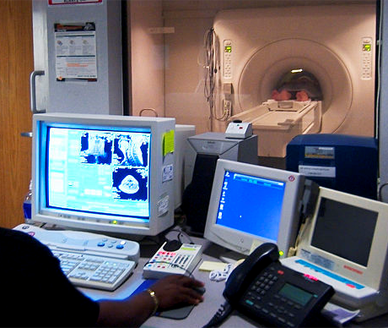Myeloma Working Group Releases Statement on Use of MRI
The International Myeloma Working Group recently published a series of consensus statements discussing the use of MRI in the treatment of multiple myeloma.
MRI can be considered the gold standard method to detect bone marrow involvement in multiple myeloma

The International Myeloma Working Group recently published a series of consensus statements discussing the use of magnetic resonance imaging (MRI) in the treatment of multiple myeloma.
“Our aim was to produce useful recommendations for the use of MRI in everyday clinical practice for the management of patients with myeloma and introduce novel criteria for the definition of smoldering or asymptomatic myeloma,” wrote panel members.
Published in the Journal of Clinical Oncology, these consensus statements incorporate data on the use of MRI in multiple myeloma from published information through March 2014. These more recent data have brought light to the value of MRI in this disease setting.
The panel used expert consensus to propose guidelines in areas where the level of published information was deemed insufficient. According to the panel, the following consensus statements should be used to guide the use of MRI in the treatment of multiple myeloma:
• MRI can be considered the gold standard method to detect bone marrow involvement in multiple myeloma and to evaluate painful lesions in patients with the disease. The panel stressed that MRI detects bone marrow involvement and not bone destruction. In addition, the modality is particularly useful in evaluating collapsed vertebrae where the possibility of osteoporotic fracture is high.
• Several recent studies have provided evidence that the presence of more than seven focal lesions and of diffuse pattern correlate with inferior survival in patients with multiple myeloma. More research is needed to determine if patients with these characteristics should be treated more aggressively.
• Consensus opinion among the experts was that MRI may help to better define complete response in patients; however, combined imaging modalities, such as positron emission tomography (PET)/MRI or PET/CT, may be of more value in this setting.
• Patients with more than one unequivocal focal lesion should be classified as having symptomatic myeloma requiring therapy. Patients with equivocal lesions should undergo repeat MRIs after 3 to 6 months and be recommended for therapy if progression is seen.
• In monitoring patients with monoclonal gammopathy of undetermined significance (MGUS), whole-body MRI can be used to identify lesions that may reflect infiltration by monoclonal plasma cells in the bone marrow. However, MRI is not currently recommended as routine in these patients unless clinical features increase suspicion of disease progression.
• MRI should be part of staging procedures for patients with solitary plasmacytoma of the bone in order to aid in the assessment of the extent of the local tumor and reveal occult lesions elsewhere.
In an editorial published with the consensus statements, Morie A. Gertz, MD, of the Mayo Clinic in Rochester, Minnesota, called the new recommendations “practice changing.”
“The use of advanced skeletal imaging is certain to improve the management of patients with asymptomatic multiple myeloma and solitary plasmacytoma of bone because it refines the understanding of their disease,” Gertz wrote. “It is prognostic in multiple myeloma and may have value in patients with higher-risk MGUS.”
Navigating AE Management for Cellular Therapy Across Hematologic Cancers
A panel of clinical pharmacists discussed strategies for mitigating toxicities across different multiple myeloma, lymphoma, and leukemia populations.